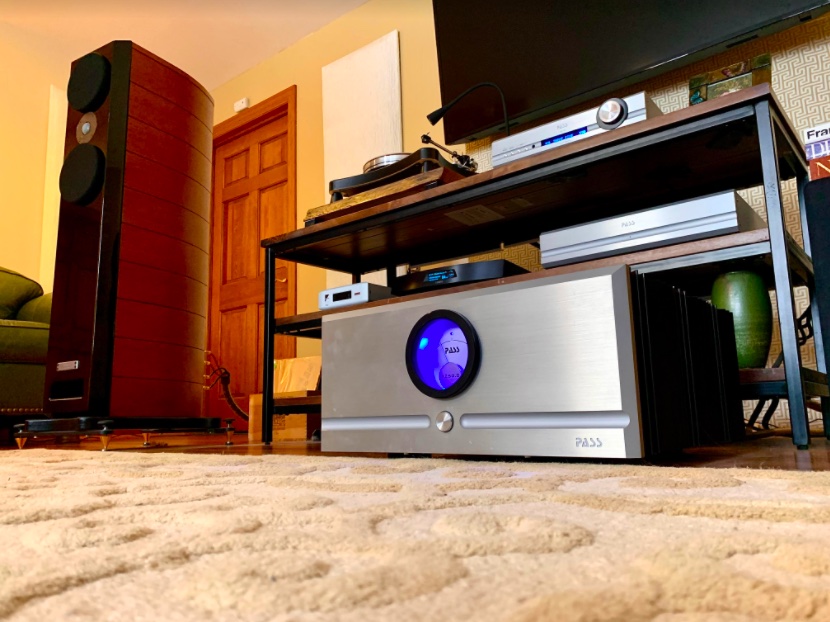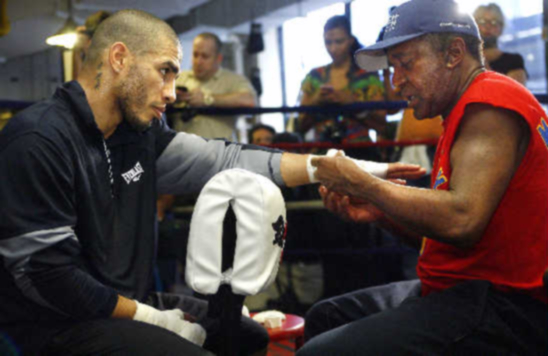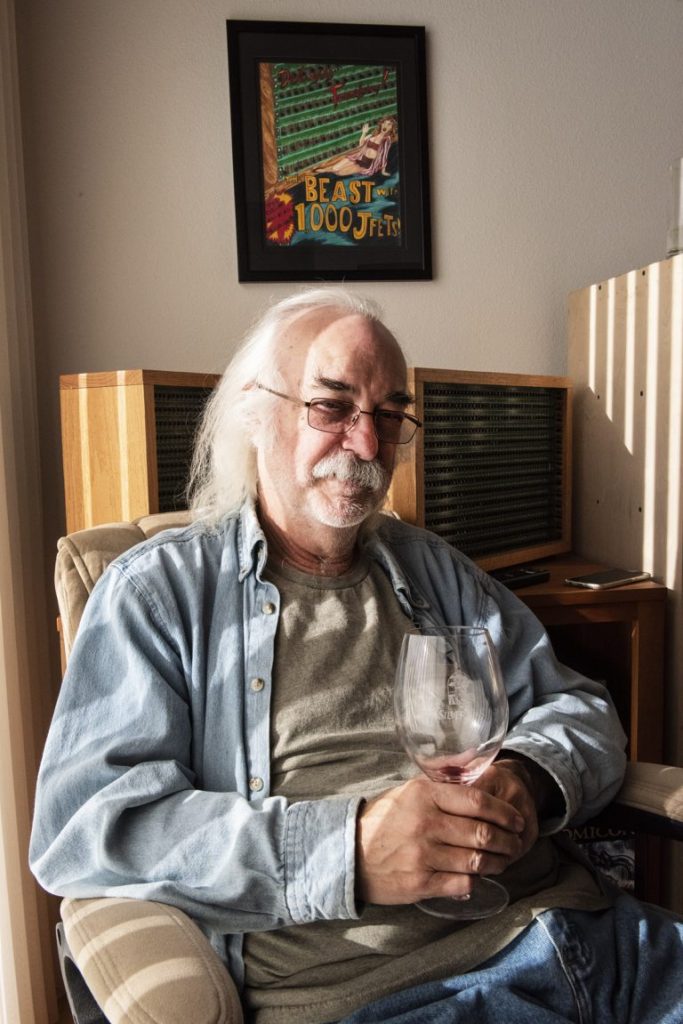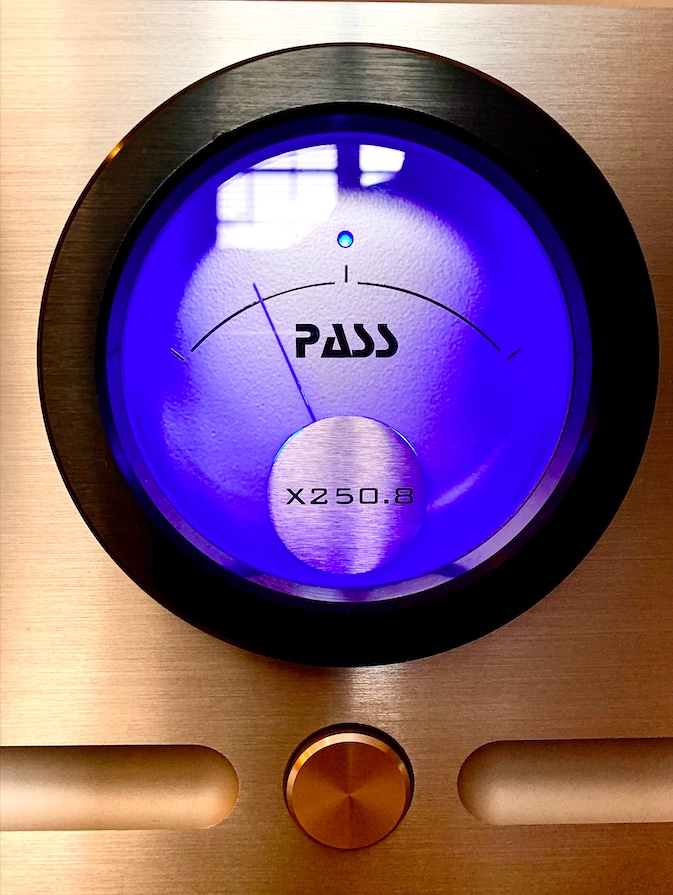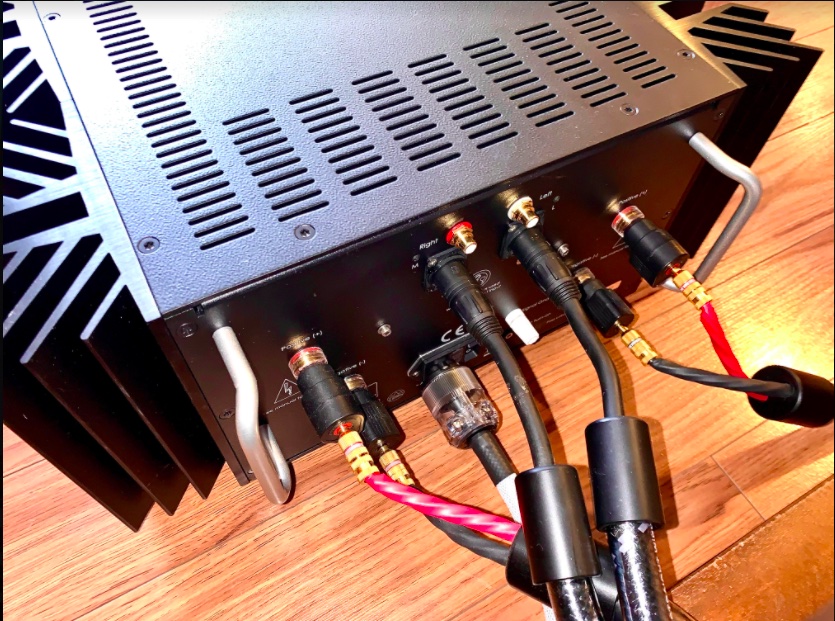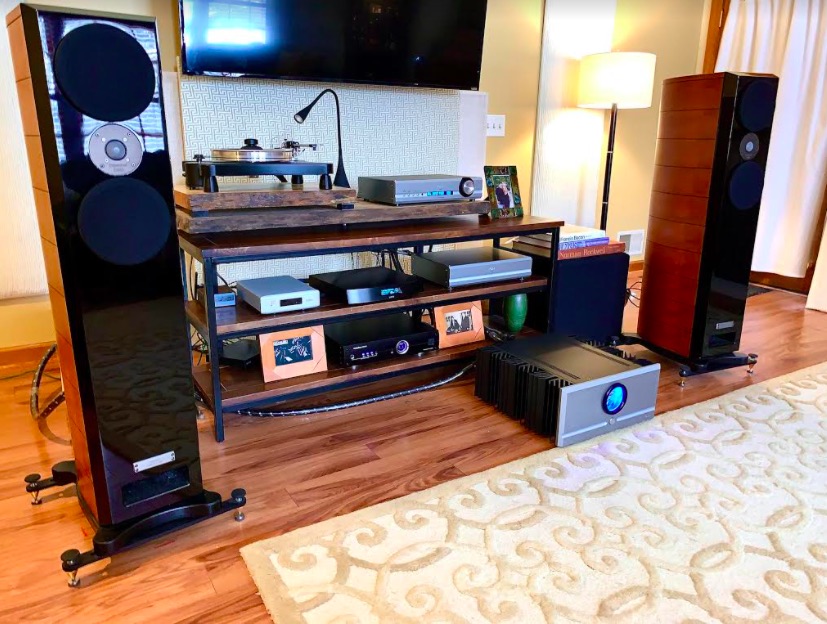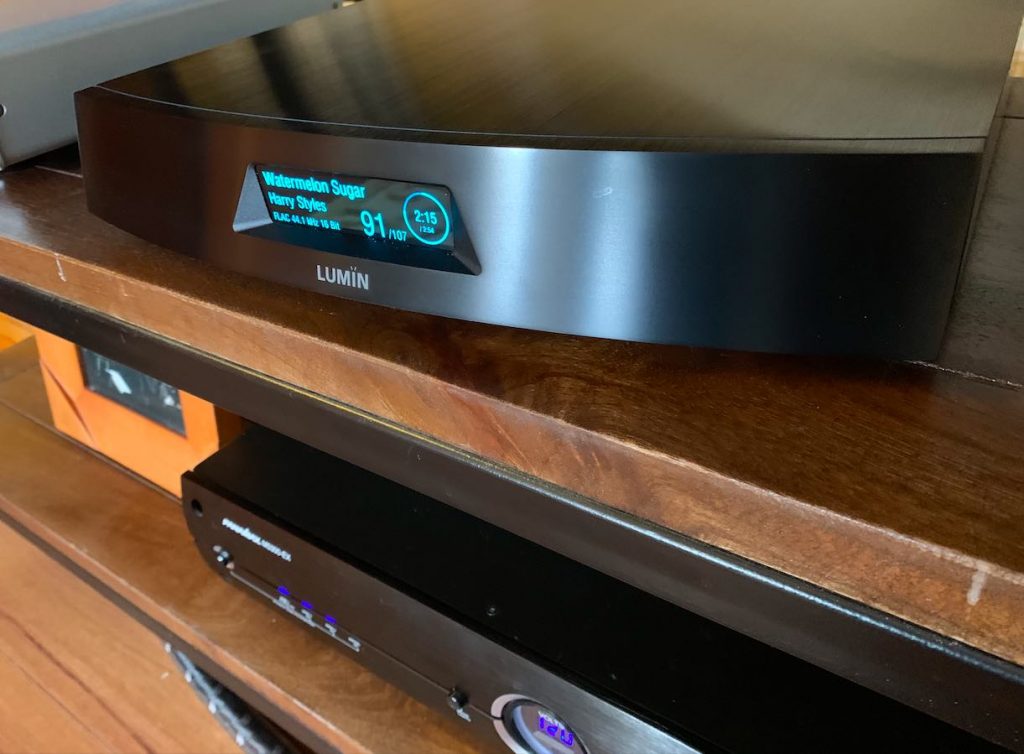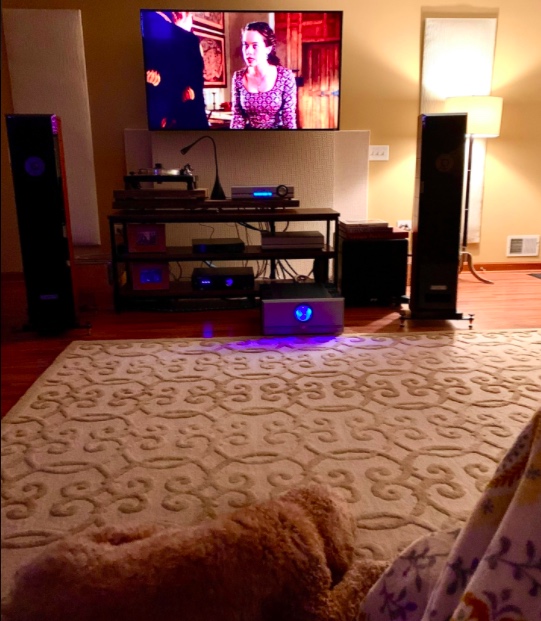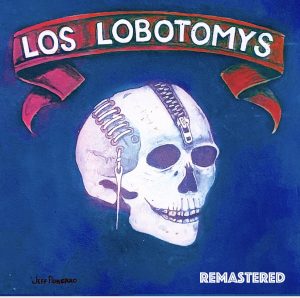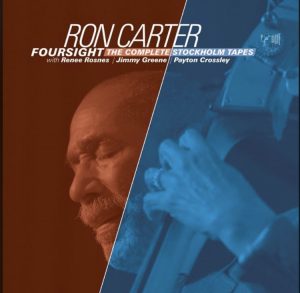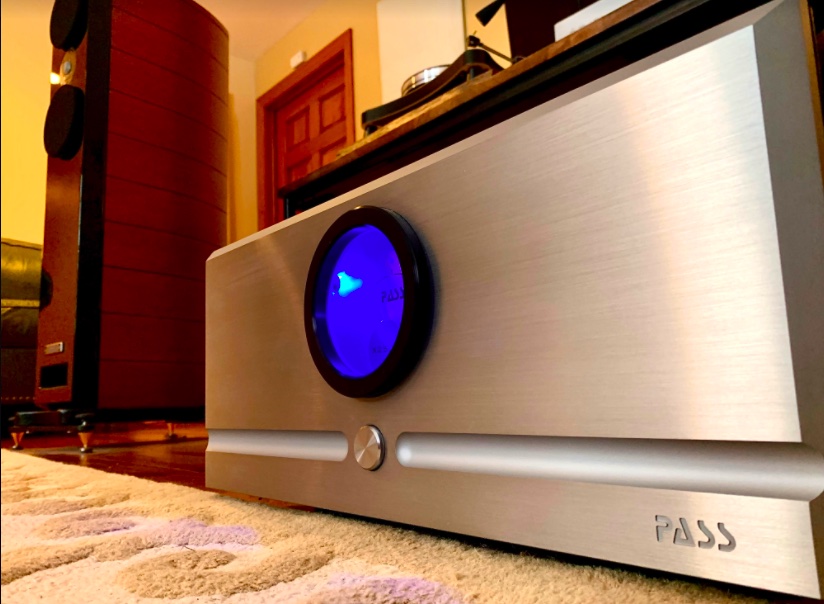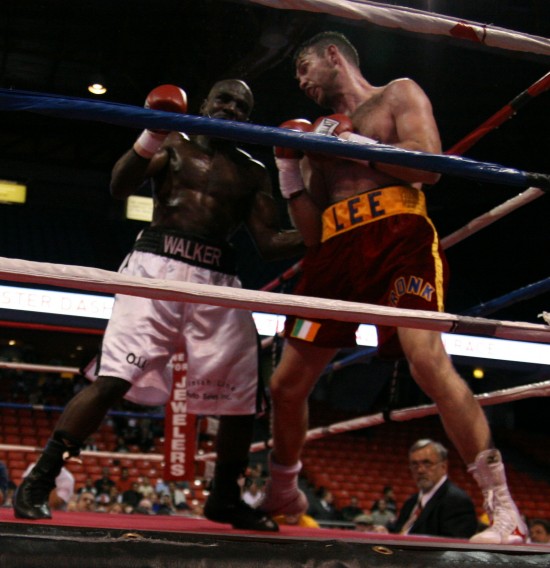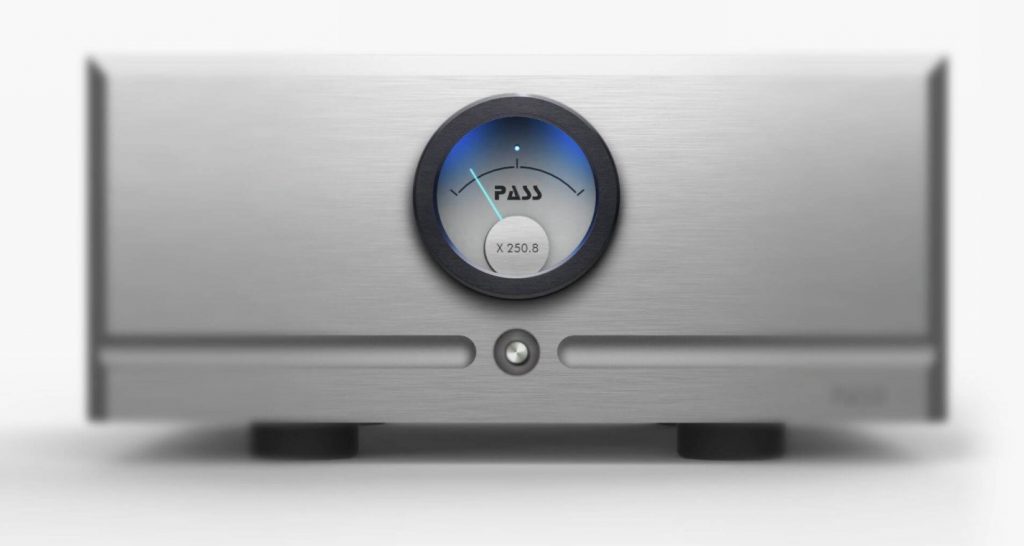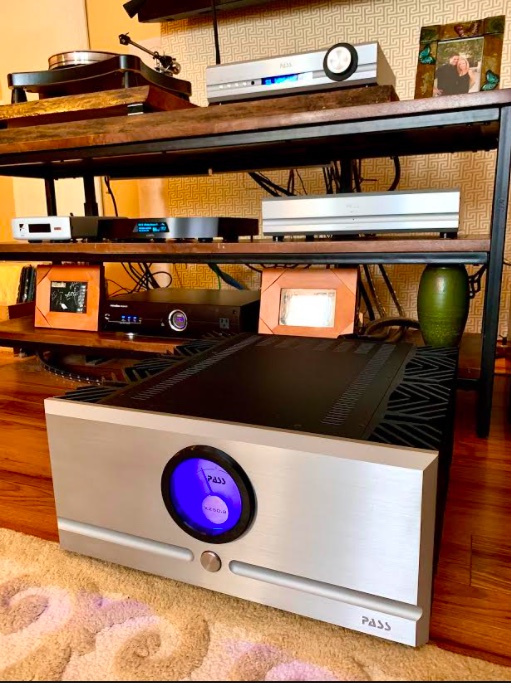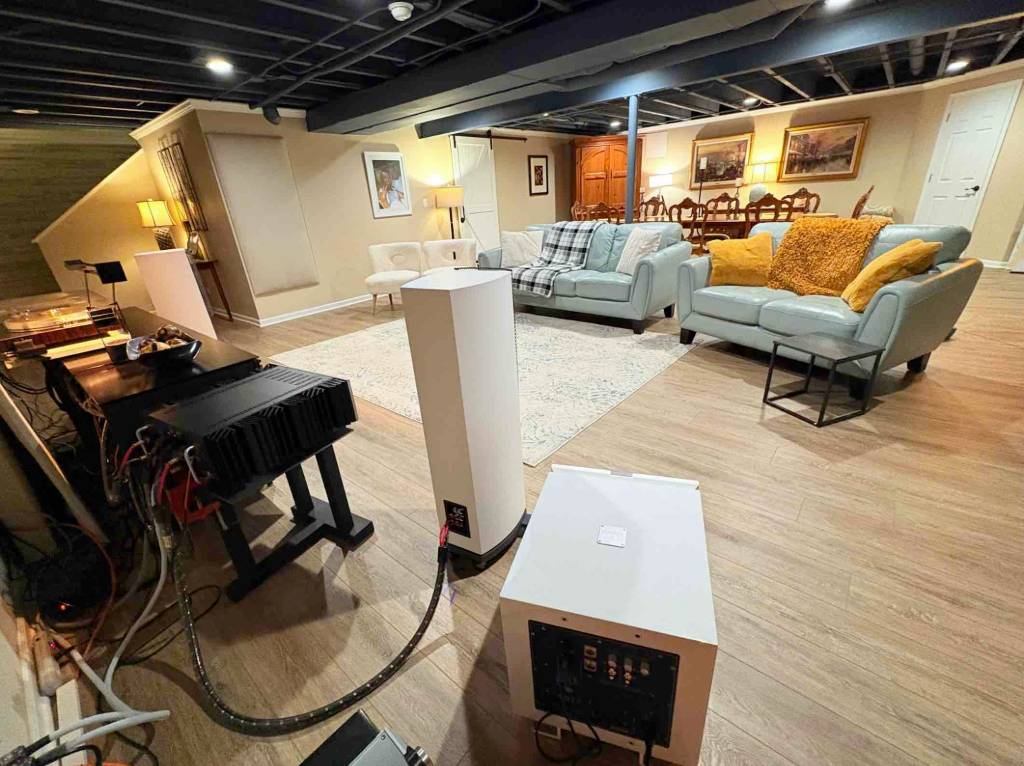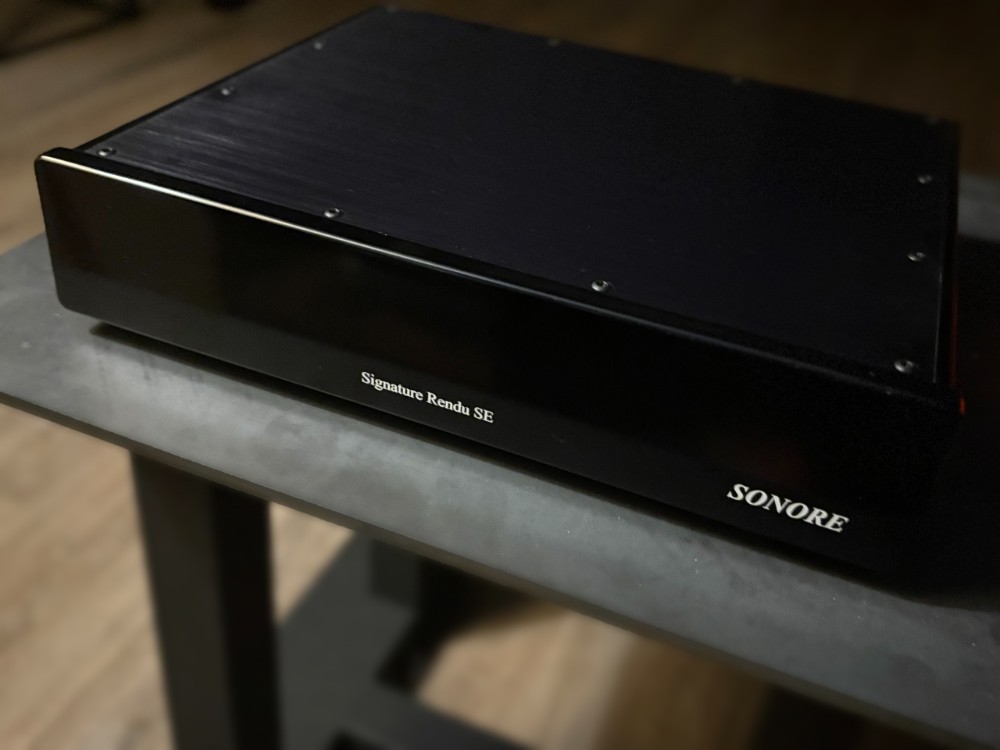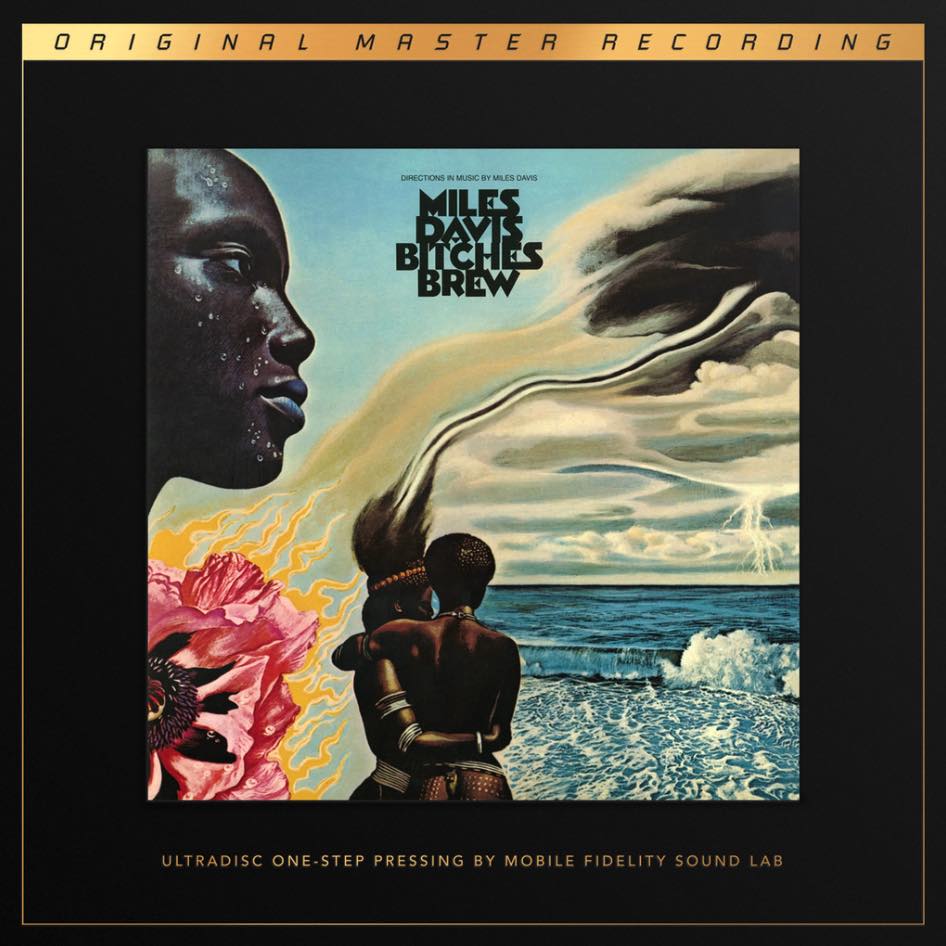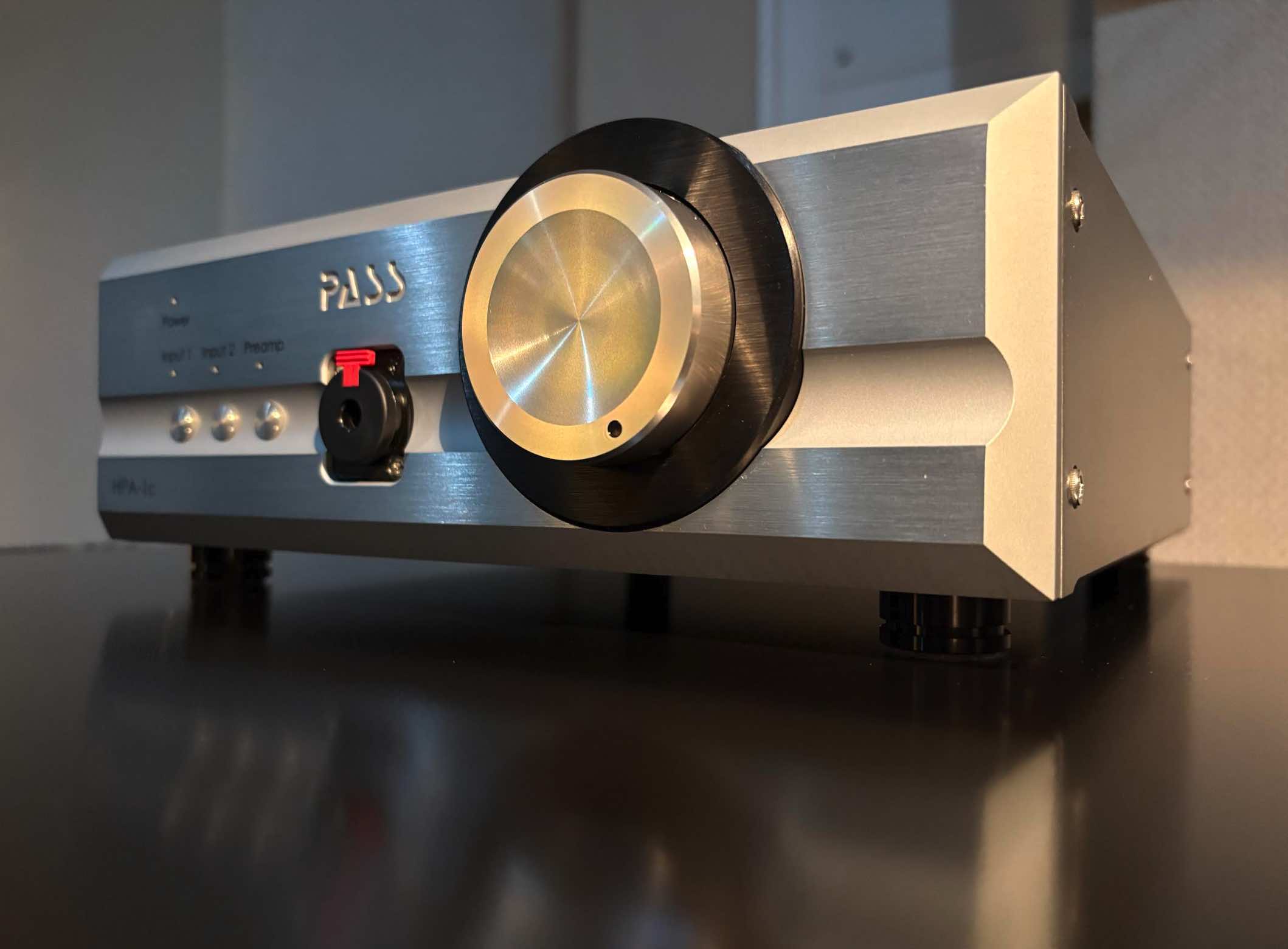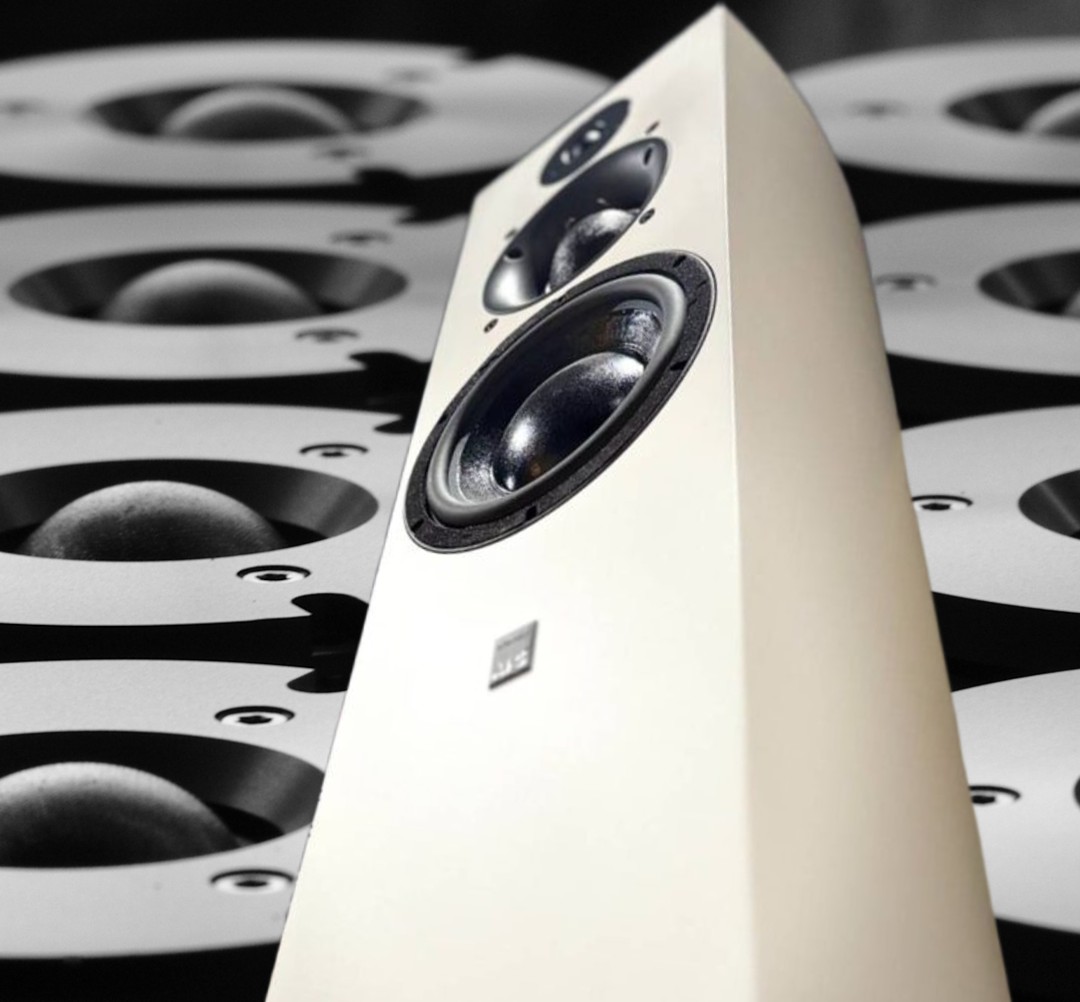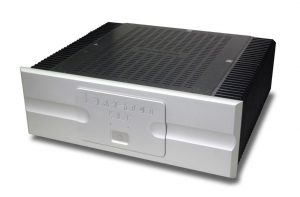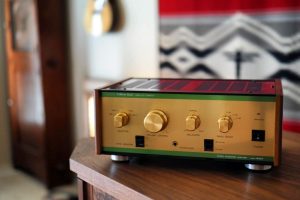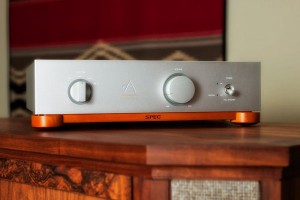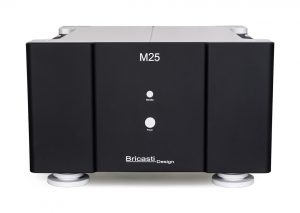Years ago as news editor for the Cyber Boxing Zone, I witnessed the special veneration that insiders held for the late Emanuel Steward, a boxing trainer who headed Detroit's famous Kronk Gym and transformed the careers of world champions like Lennox Lewis, Wladimir Klitschko, and Tommy Hearns. Then after signing into my first AXPONA show with my boxing press card, I learned that Nelson Pass carries that same clout among his peers for his superb audio amplification designs.
Mr. Steward, at right with multiple weight division champion, Miguel Cotto. Photo by Chris Farina, Copyright 2010.
Like boxing, high end audio has its share of hyperbole and shameless self-promotion, yet Mr. Pass remains a giant of the industry, widely respected for his game changing work—but instead of relying on the jab and footwork, he does it with circuits and masterful engineering.
A Little Passing Knowledge
A Physics graduate from UC-Davis in 1974, Nelson Pass designed crossovers and speaker enclosures for ESS Speakers while a student and, after graduation, co-founded Threshold Audio with industrial designer Rene Besne, where he gained renown for their Threshold Stasis amplifier.
Nelson also gained wide acclaim for his Adcom GFA 555 amplifier design.
While at Threshold, he met and hired Joe Sammut, who eventually rose to the position of business partner; he would move on to the presidency at Krell and, eventually, Pass Labs.
Nelson also hired Wayne Colburn, a future partner at Pass Labs, as the "Wizard's assistant" at Threshold in 1989.
Home Cooking at the Pass
Official Pass Labs operations commenced in 1991 at Nelson Pass's home (he and Mike Burley created a machine shop in Nelson's garage with three CNC machines they'd built to produce the amps), where he gained notoriety with his single-ended Aleph. The first version, the Aleph 0, was a monoblock rated 70 watts into 8 ohms and, according to passlabs.com, "was unique in using three gain stages of power Mosfets, including a push-pull output stage biased by a big constant current source. The amplifier operated as single-ended Class A up to its 70 watt rating, and in push pull Class A at higher wattage."
A Little Passing Knowledge
About this time, Pass hired his next-door neighbor Elena Tong to help with production (she went on to help manage the company until she retired a couple of years ago). They created a stereo Aleph, and a preamp, the Aleph P.
Then in 1994, Wayne Colburn rejoined Nelson. At Pass Labs, he improved the Aleph P line stage, giving it a new active volume control circuit and remote control, created a new phono stage and, in the process, Nelson Pass received two patents, with one of them the design of the Super Symmetric circuit that's still used today. He also created their D1 DAC that's still highly regarded nowadays, but currently focuses primarily on preamps.
In 1995, Joe Sammut left Krell to become the head of operations at Pass Labs and in 1996, designer Desmond Harrington, also from Krell, followed suit. Sammut would go on to become President of Pass Labs, allowing Nelson to focus all his time on product development.
Following subsequent iterations of the Aleph, Pass introduced their newly patented Super Symmetry topology with the X1000 amplifier in 1998, achieving 1000 watts with high performance, local feedback, and only two gain stages: a cascoded differential pair of transistors and a large bank of complementary output followers. This ground-breaking design has formed the amplifier products from Pass Labs to the present day.
The first XA amps combining the X and Aleph topologies arrived in 2002 via their XA200 (200 watts mono) and XA160 (160 watts). In 2003, they introduced the X150.5, a major improvement to the X150. Other .5 versions of X amplifiers followed suit through 2005. In 2007, the ".5" revisions were applied to their XA amp series, including the XA100.5, XA60.5 and XA30.5.
"Pass Labs products remain in the line up to 9 to 10 years," Bryan Stanton, longtime publicist for Pass Labs, wrote via email. "Wayne Colburn once modestly mentioned something to me over dinner: Being in the line that long, imagine how difficult it is to design a preamplifier, phono preamplifier or amp so that its performance is 'Top Dog' in a very competitive field for that length of time!"
"So an X > X.5 > X.8, or an XP-10 > XP-12 progression requires significant research, deciding what factors can still be further improved, search and selection of the next generation of high-performance component parts to achieve the desired results—not to mention figuring out how to implement them, as well as making them 'play together nicely.' Even with the ever-modest Wayne explaining the process, the mind boggles how prescient he and Nelson has to be! "
In 2007, Desmond Harrington took over presidential duties at Pass Labs, while Nelson and Wayne continued working on product development. Now based out of larger facilities in Auburn, CA, and since releasing the X.5 series, they began developing the latest round of major improvements, the X.8 amplifiers.
Nelson Pass (photo by David Robinson)
A Conversation with the Legend
A brief interview conducted via email sheds a little light on the the designing genius of Mr. Pass.
Juan Ayllon: Tell us about your patented "Super Symmetry" topology used in his X series of amps to yield extremely low distortion levels:
NELSON PASS: No secrets here. For starters, I have enclosed a zip file of the patent pages and a white paper from 1998 (see the appendix for links to these pages).
Basically, it is a clever topology that uses matched balanced halves of an amplifier in such a way that the errors which are identical to both halves are cancelled at the output, and further, those errors which are not identical are still replicated at the output are also cancelled. This gives much lower low distortion without having to apply more feedback.
And on the differences between the X.8 vs X.5 series amps?
The hardware on the .8 series is bigger and heavier—the power supply, heat sinks, and output stages. Also we employed what is known as "current feedback" (CFA) on the .8's, which gives us some improvement over the .5 series where voltage feedback (VFA) was used. Also we introduced an improved output stage bias circuit, which gives more constant bias current. Lastly, we introduced a subtle asymmetry into the output stage to better align the phase of 2nd harmonic distortion.
It has been said that a lot of what makes the X250.8 amp so special is the heavy implementation of balanced or "near balanced" circuitry and Class A to yield your sweet, full bodied, transparent sound. In my experience with the X250.8, the Class A/B indicator wand rarely moves and seemingly never leaves Class A at normal to reasonably high listening levels. Please, elaborate on how this works.
I believe you heard right with regard to the virtues of balanced and Class A operation... In addition to running a very high bias figure, enough to qualify as "pure Class A," we have worked to reduce the degeneration in the output stage so as to maximize the "square law" characteristic, the result being that the Class A envelope is larger than usual. (Paper on square law is attached). As a result, the meter which shows the current drawn by the output stage, where a jump indicates operation beyond Class A, doesn't typically move at ordinary listening levels unless the speaker is particularly inefficient or low impedance. Another two articles are attached, "Leaving Class A."
Have you found that listening panels have helped you tweak some products? Any details would be loved by our readers.
Yes. My business partner Joe Sammut (now deceased) was one of the great listeners of all time. He could spot differences between amplifiers in blind testing with considerable accuracy, and so for many years we relied on him to vet product and also teach the designers (me, Wayne, and Desmond) how to better listen for these things. The way I used to work it with Joe was to make two amplifiers differing in only one thing and put them in the trunk of his car, no label, and tell him, "Joe I put two amplifiers in the trunk. Let me know what you think." A couple weeks or so later he would come back with labels on them and say something like, "This one is pretty nice. That one needs some help." On at least one occasion I gave him identical amps, and he came back and said, "I can't tell the difference."
It has been quite rare for us to use outside "listening panels"—we get the best results when someone can take two unknown pieces home to their own system and listen for a couple weeks or so. At the same time, I have performed blind experiments with outside listeners where the product had a knob they could adjust without knowing what it did.
Best example of this was the SIT-1, where the knob adjusted the "load-line" (and thus the 2nd harmonic character) of a single-ended SIT power transistor. Listeners came back with a reasonably consistent preferred setting, and I ended up setting that as the "middle" on the front panel meter. In the end this gave us insight into not only the preferred value of 2nd harmonic, but also the phase alignment, which has remained very useful in tweaking the sound in other product.
Enter the Pass Labs XP250.8
One of Nelson Pass' latest prodigies is the X250.8 amplifier. Weighing in at 100 pounds it boasts a thick brushed aluminum billet faceplate with a large, blue-lit A/B meter at center, a standby button below flanked by its signature CNC router'd troughs on both sides, and the engraved name, PASS, at the bottom right. Large heat sinks adorn both sides of its 19" x 21.25" x 9" chassis.
The top of the chassis is slotted for ventilation, and the rear boasts two beefy handles for lifting, balanced XLR and unbalanced RCA inputs, the master power switch, the input for an IEC power cord, a screw-in ground connection, and speaker binding posts with large and comfortable, ergonomic curved wing nuts that lock in speaker cable spades or banana connectors securely. It has four large rubber feet underneath.
When operating, the amp gets warm, but not so hot to make it unpleasant to the touch. Nevertheless, it demands space around it (at least six inches all around, according to its manual) and should never be placed in an enclosure.
A Word on Specs
The X250.8 is rated at 26 dB gain, boasting 250 watts into eight Ohms and 500 watts into four Ohms. It has an input impedance of 50k Ohms for single-ended and 100k Ohms for balanced, a damping factor of 150, and a slew rate of 50 v/uS. The manual also adds, "The input capacitance is just a few picofarads so anything will drive it." (click HERE for more specs ).
Passing the Time
Shipped brand new from the factory, the X250.8 requires several weeks playback time for the capacitors and other components to settle in properly; initially the sound is a little harsh, but as several weeks and hours pass, the presentation becomes much smoother. It becomes apparent early on that it offers plenty of sensitivity and headroom, and to my astonishment, the Class A/B indicator wand never leaves class A—and, trust me, it gets plenty loud at times, especially when taking in HD movies during prolonged binge-watching sessions!
Nelson Pass later emails to clarify, "The meter actually reads the current drawn by the output stage. When you are in Class A that is pretty constant. When you leave Class A, the draw increases and the meter moves up."
The X250.8 meshes well with tube preamps. My PrimaLuna Prologue 3 preamplifier, with its tube rectification, 12AU7s and 12AX7s, provided that luscious warm tonal affectation, which were especially nice with jazz and vocals. However, we preferred the Pass Labs XP-12 preamplifier, overall, for its heightened clarity and nuanced finesse.
In tandem with the XP-12 line stage, the X250.8 is a powerful conduit, delivering startling realism with well-recorded media, and highlighting differences in sources. For example, while my Lampizator Big 7 Mk1 DAC was here, it underscored its strengths and characteristics: bold, linear, but with a wetter, glistening presentation as afforded by the RCA 5U4G rectifier tube in tandem with the 300B tubes in the output stage. Switching out the Lampizator DSD Komputer Music server for an Intel NUC running the Roon Optimized Core Kit revealed a bolder, brasher sound than the latter (the DSD used software and hardware that yielded a softer touch). Then, after the Lampis departed, the Lumin T2 Network Music Player with its streamer and built-in DAC (which was used in the formal listening session) imparted a balanced, full and slightly warm, yet detailed aural experience devoid of tube sheen.
Using the balanced XLR connections lowers the already quiet noise floor a touch, and employing excellent cabling like the Straight Wire Crescendo 3 speaker cables, Virtuoso and Crescendo interconnects help deliver the goods to revealing speakers like my Usher Mini Dancer 2s (rated at 90 dB sensitivity with a nominal impedance of four ohms) with startling clarity.
The X250.8 is designed to plug directly into the wall. I had previously employed the rugged Torus Power AVR2 Elite 20 Isolation Transformer for a review (you can read that review HERE) with it and found that it afforded extraordinary protection, delivering plenty of clean current and imparting a slightly softer, prettier presentation. Without it, the X250.8 sounds slightly bolder; the difference harks Arnold Schwarzenegger's cologne vs. sweat analogy—when it comes to Mr. Universes, do you prefer the more lovely physique of Steve Reeves or the more rugged Reg Park? Interestingly enough, an industry veteran pointed out that the X250.8 already has an oversized toroidal transformer that is designed for isolating its electronics from dirty power. Either way, the manual cautions that the amplifier should be unplugged during lightning storms or prolonged periods of non-use.
The big surprise was this, however: Previously, my wife, Belle, and I had used the Lampizator Big 7 to process the digital signal from our Vizio E65-E1 65" 4K HDR Smart TV into our system via Toslink (i.e., optical cable), however, since the Lumin is a dedicated music streamer and can't accommodate, we ran a pair of single ended RCA cables directly into the preamp and the results were quite satisfying! Apparently, the TV's digital to analog capabilities are transparent enough that by connecting it directly to the XP-12 preamp, the X250.8 delivers a thrilling and visceral sensory experience approaching that of a high-end cinema, sans the cost and crowds!
Going for the Long Pass (i.e., Listening Session)
The crash of Jeff Porcaro's ride cymbal and the punch of his snare, pattering of Lenny Castro's conga, Will Lee's beefy bass line, and the melodic moans and wails of Steve Lukather's high gain, ultra-processed Super Strat are vivid, thick and visceral in "Big Bone" (Los Lobotomys. Los Lobotomys. Remastered. Qobuz 44.1kHz, 24-bit); their prowess and largesse hint at the hits Porcaro and Lukather graced by their band, Toto, and scads of others in the 80s, when everything was big. When Luke cuts loose with his signature eighth note triplets and blues scales, it's the sensory equivalent of surfing a roaring, glassy 23 foot wave off Tahiti's Teahupo'o village! Towels, anyone? Surely, the experience, as delivered by the X250.8 is more than enough to quench the rocker in us all.
The 250.8 delivers delicate passages with timbral accuracy, sensitivity, and palpable presence. In Ron Carter's "595" (Foursight: The Complete Stockholm Recordings. Qobuz FLAC 48kHz 24Bit), Jimmy Greene's mournful saxophone, Payton Crossley's tapping cymbal and snare, Renee Rosnes' piano comps and Carter's double bass, all sound vivid, full and organic, rendered in real space—and in their intermittent stops, dead silence, save the subtle note decay. When the tempo picks up, the dance between piano and keys, with Carter walking his bass on a rakish, tangential trajectory, is served up hot and fresh!
Shelby Lynne's downtempo title track in Just a Little Lovin' (Qobuz FLAC 96kHz 24-bit), the minimalist interplay of Curt Bisquera's cymbal and snare rimshots, Dean Parks' buttery electric guitar, and Lynne's smoky effects-gilded vocals, undergirded by Rob Mathes' keys and Kevin Axt's electric bass, glistens and serves up an aural appetizer, sumptuous foie gras tidbits melting on your tongue in a four star bistro, compelling you to savor each morsel and whetting your appetite for more!
And if Opera is your thing, Amartuvshin Enkbat's rich and buttery baritones—one moment a delicate and tender crepe, the next a fencer's sword, finds a luscious, but equally dazzling mezzo-soprano counterpoint in Annalisa Stroppa. Performing against the backdrop of a rich and restrained string section in "Nabucco Act I Scene 4: Fenena! O mia diletta!" (Amartuvshin Enkbat. Verdi: Nabucco, Live. Qobuz. FLAK 96kHz 24-bit), their stunning performances give you pause, as you find yourself seated in the 10th row of this magnificent hall, courtesy of the X250.8.
Do Not Pass This Up
The Pass Labs X250.8 is a serious and masterful instrument, superbly engineered, reflecting the pedigree of its namesake with great aplomb, delivering a presentation that is powerful and immensely sensitive, and true to its source. It only flexes its muscles when needed, but when it does, it does so with great authority. In its Owners Manual, Nelson says, "Since the release of the X.5 series seven years ago we began working on what has now become the X.8 amplifiers. They embody everything we know." That rings true as, bottom line, it's the best amplifier that's graced my listening room (i.e., the family room).
Above, Andy Lee stuns the swarming Michael Walker and, below, Belle smiles with the victorious Andy Lee and his trainer, Emanuel Steward.
On September 17, 2010, Belle and I met the late Emanuel Steward the night his protege, Limerick, Ireland's Andy Lee, halted rugged Michael Walker in eighth rounds at Chicago's UIC Pavilion (born in Belfast, Ireland, Belle was thrilled). Although Steward died two years later, Lee went on to win the vacant North American Boxing Federation Light Middleweight title in June 2014, dedicating the win to his late trainer, and the World Boxing Organization World Middleweight title six months after that. No doubt, Lee owed a great deal to his legendary mentor.
Photo courtesy of Pass Labs
With the sublime X250.8, you have the opportunity to possess and enjoy one of the crowning achievements of another all-time great, Nelson Pass. It will drive just about any speaker you put in front of it to great effect. Be forewarned, however, although you could spend a lot more to get less, it is a sizable investment at $10,000. Moreover, it is fairly large and heavy; too big to fit on the bottom shelf of the A/V rack in our family room, it sat parked out front on its rubber feet, offending Belle's aesthetic sensibilities (she prefers less clutter). Thus, we will be looking next at the Pass Labs X150.8, which will still drive my Usher speakers very well, cost less, and fit in the rack just fine!
That said, if the X250.8 fits your budget and domestic considerations, I couldn't recommend it more. But, don't take my word for it; go to an authorized Pass Laboratories dealer and find out for yourself!
Pass Labs X250.8 Amplifier
Retail: $10,000
Pass Laboratories
Appendix of PDFs
Text and photos (unless otherwise stated) by Juan C. Ayllon




